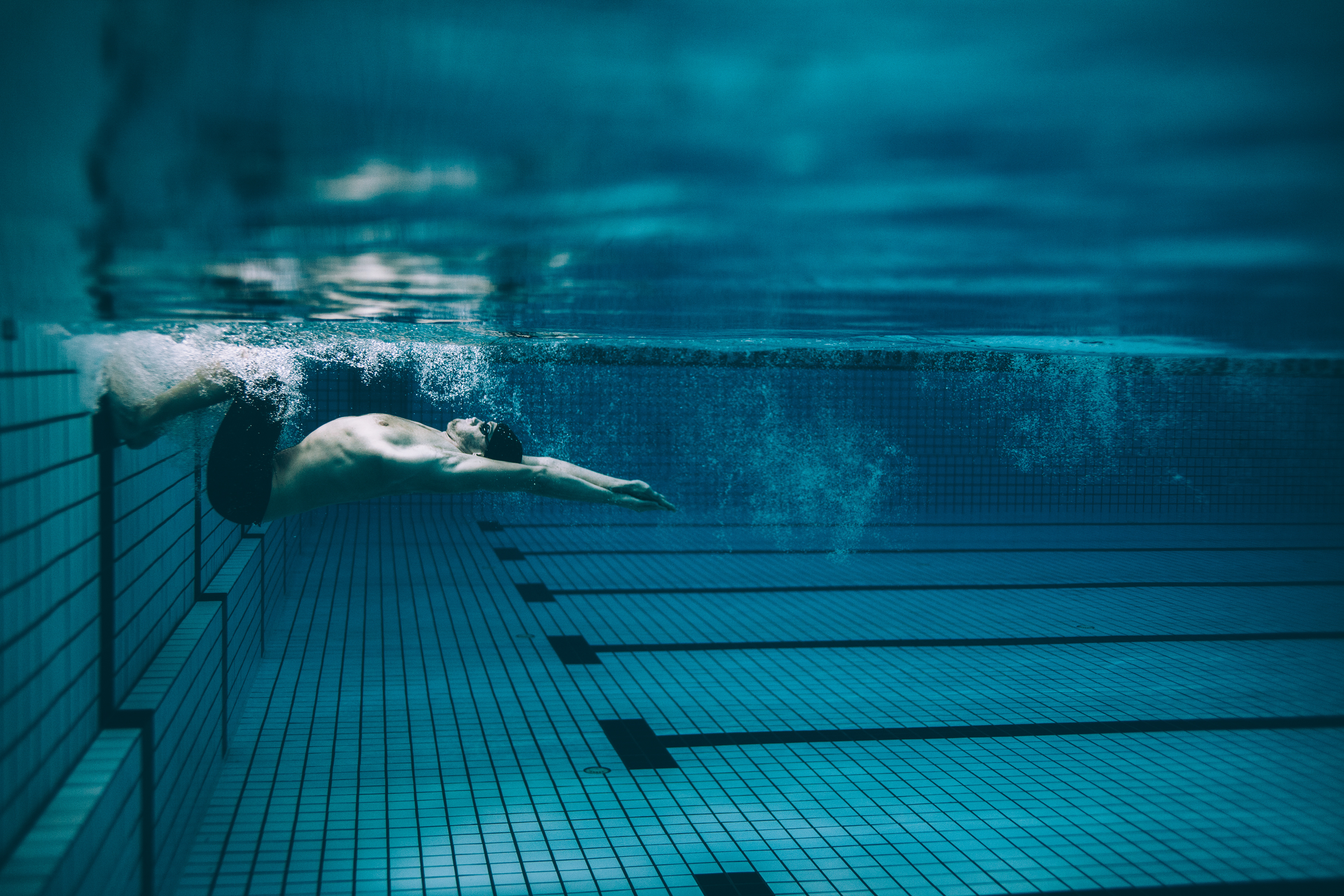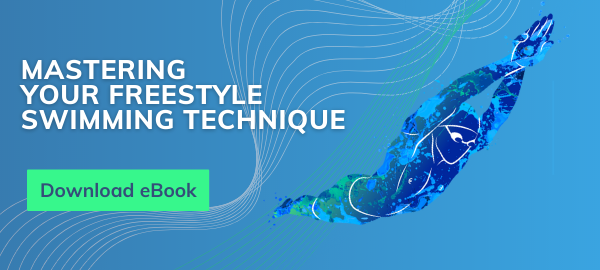All swimmers have one common goal – to swim a faster and more efficient freestyle stroke. But very often, swimmers who work towards that goal, forget the importance of the freestyle flip turn. With well-executed flip turns, you can not only drop time in all your freestyle races, but also gain an advantage over all your competitors. In this blog article we are going to talk about the four parts of the freestyle flip turn and how you can improve your flip turns in 3 simple steps.
The four parts of the freestyle flip turn
The freestyle flip turn consists of four different parts:
- the approach
- the turn
- the underwater phase
- the breakout
The approach, which consists of swimming the last 5 meters before you start your flip, is a major part of your flip turn. It sets you up for a great (or a not so great) turn.
The turn itself consists of your body doing a flip initiated by your chin and followed through by your core. Depending on your approach, your turn will either be fast and powerful or rather slow and less powerful.
The underwater phase begins as soon as you push off from the wall after your turn. It’s the fastest part of your entire swim and it’s critical to maximize the potential of your underwater phase to set yourself up for fast freestyle stroke.
The last part of the freestyle turn is often ignored by swimmers and coaches but it is just as important as the approach, the turn and the underwater phase. The breakout after an underwater phase sets your rhythm and pace for the entire rest of the lap you are swimming. Timing your breakout right helps you keep the momentum you gained from your underwater phase while you are swimming.
Step 1 to improving your Freestyle flip turn – Accelerate into the wall
Many swimmers make the mistake of viewing the flip turn as a chance to take a quick break in-between laps. They slow down when they approach the wall. But actually, you should do just the opposite. Instead of slowing down the last 5 meters, you should speed up. The more speed you take into your turn phase from the approach, the faster you are going to turn and the faster you are off the wall. By turning faster, you will have an explosive push off from the wall and have more power for your underwater phase. So as you can see, accelerating into the wall impacts not only the end of each lap, but also the turn and the beginning of your next lap.
Take your last breath at the flags, or earlier, and keep your head down when you approach the wall for your flip turn. Don’t look up to orientate. Instead learn how to gauge your position by following the markings on the bottom of your pool. By keeping your head down and your chin tucked, you will automatically have a higher speed approaching the wall which will help you turn faster.
Instead of just trying this in competition, apply the fast approach to ever flip turn you take in your training sessions. By internalizing a fast approach during your training sessions, you will quickly notice great improvements of your flip turns.
Step 2 to improving your Freestyle flip turn – No breathing in or out of the turn
You have probably heard this hundreds of times: “Don’t breathe into the wall” or “Don’t breathe out of the wall”. Well, there is a reason why your coach keeps telling you this. Breathing into or out of a wall plays a crucial role in the speed and momentum you build up during and after your flip turn.
Aside from making you turn, breakout and swim faster, holding your breath before and after the turn also promotes a much better chin placement and strengthens your lungs which in return promotes better breathing patterns while you are swimming.
The best way to implement this no breath before and after turns rule is by simply doing it. There is no shortcut to this unfortunately. Instead of easing yourself into it, we recommend you just do it. Every turn you take during your training sessions, think about the importance of this and avoid that last breath right before your turn and wait at least until the 3rd or 4th stroke until you take your first breath after the turn. It’s definitely going to be difficult at first, but once you internalize the no breathing rule, your turns are going to be out of this world.
Step 3 to improving your Freestyle flip turn – Do three dolphin kicks off each wall
Once you have mastered steps 1 and 2 of improving your freestyle flip turn, it`s time to move on to step 3 which will make you break out ahead of your competition after every turn. When you are comfortable with a fast approach and the no breathing rule before and after your turn, you can start working on your underwater phase.
As mentioned earlier, the underwater phase is the highest speed you will have during your entire lap. So instead of coming up right after your push off, you need to learn to prolong the underwater phase and use it to your advantage. By doing 3-5 quick and powerful dolphin kicks after your push off, as soon as you notice that you lose momentum, you can prolong your quick underwater phase. By doing this, you are also giving your arms an extra break.
In the beginning, aim for 3 quick and powerful kicks after every push off. These kicks should really propel you forward and also bring you to the surface so you can have a perfect breakout phase. Again, unfortunately there is no shortcut to this. It takes time and a lot of sweat (and shortness of breath) to really internalize the 3 dolphins kicks after every turn. But always keep your end result in mind.
If you are racing someone, push off at the same time from the wall, and you are doing the 3 dolphins kicks and your opponent is going straight into his breakout, you will come up half a body length ahead of them. Now if you are doing a 200 or 400 or maybe even 1500-meter race, imagine how much time you can save compared to your competitor if you are breaking out a body length ahead of them after every turn.
To learn how you can develop an unstoppable freestyle kick, that will help you also improve your underwater phases, check out our blog on How to Develop an Unstoppable Freestyle Kick.
Now it’s time for you to take the guesswork out of swimming faster freestyle! Make a plan towards your goal of improved flip turns and implement our tips into your future training sessions. It’s definitely not going to be easy to internalize these three steps, a fast approach, the no breathing rule and the 3 dolphin kicks, right away, but once you do, your flip turns will be faster, more efficient and competition killers.
To measure your improvements during your training sessions, we recommend training with the all-new TritonWear device. The wearable device tucks under your cap and records your workout as you swim. You remain focused on training and improve your freestyle stroke, kick and flip turns, while TritonWear captures the intel you need to swim faster. To learn more about how TritonWear shows swimmers their strengths and weaknesses based on data collected while you are swimming click here.



.png)

.png)
